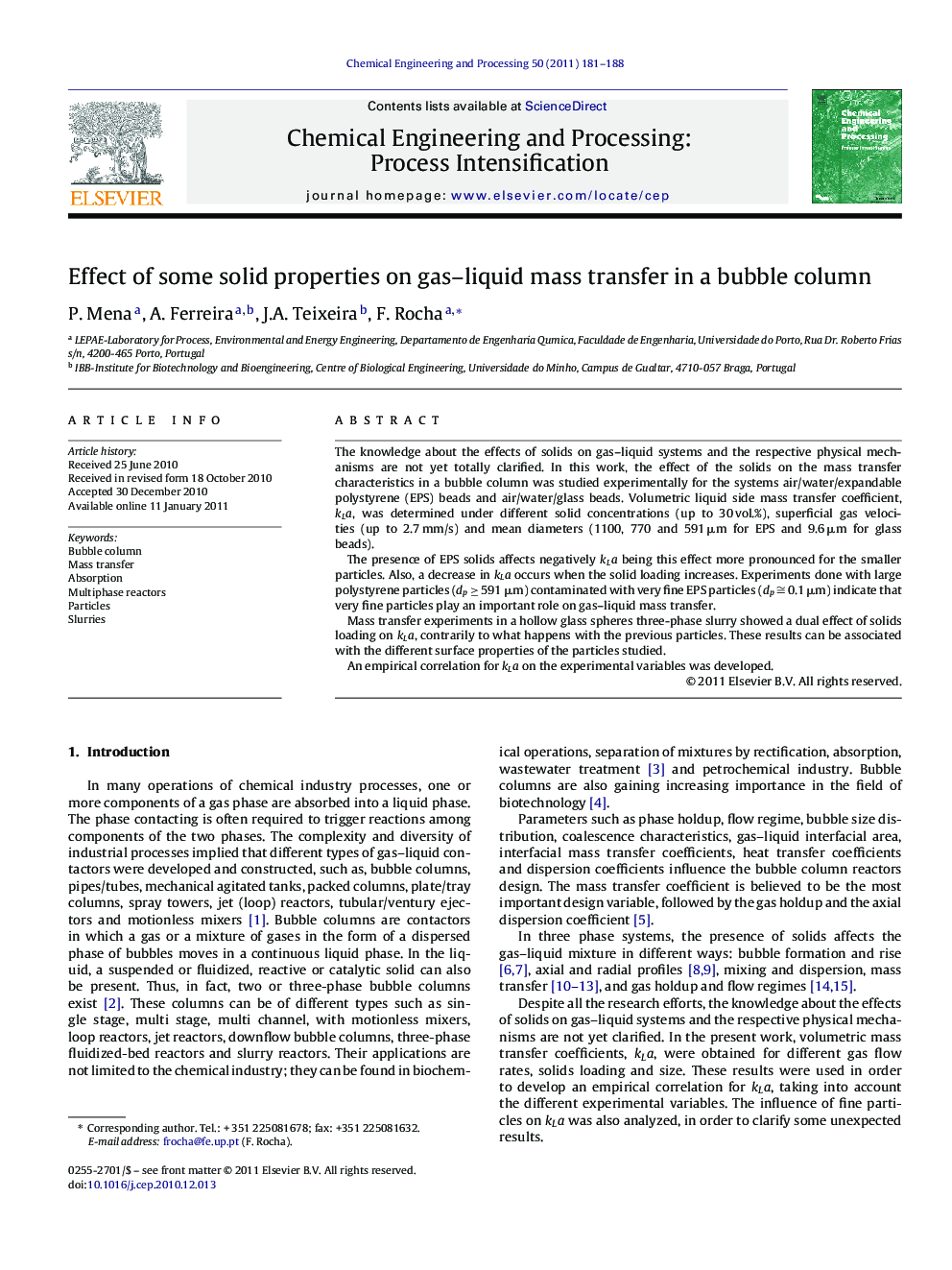| Article ID | Journal | Published Year | Pages | File Type |
|---|---|---|---|---|
| 687700 | Chemical Engineering and Processing: Process Intensification | 2011 | 8 Pages |
The knowledge about the effects of solids on gas–liquid systems and the respective physical mechanisms are not yet totally clarified. In this work, the effect of the solids on the mass transfer characteristics in a bubble column was studied experimentally for the systems air/water/expandable polystyrene (EPS) beads and air/water/glass beads. Volumetric liquid side mass transfer coefficient, kLa, was determined under different solid concentrations (up to 30 vol.%), superficial gas velocities (up to 2.7 mm/s) and mean diameters (1100, 770 and 591 μm for EPS and 9.6 μm for glass beads).The presence of EPS solids affects negatively kLa being this effect more pronounced for the smaller particles. Also, a decrease in kLa occurs when the solid loading increases. Experiments done with large polystyrene particles (dp ≥ 591 μm) contaminated with very fine EPS particles (dp ≅ 0.1 μm) indicate that very fine particles play an important role on gas–liquid mass transfer.Mass transfer experiments in a hollow glass spheres three-phase slurry showed a dual effect of solids loading on kLa, contrarily to what happens with the previous particles. These results can be associated with the different surface properties of the particles studied.An empirical correlation for kLa on the experimental variables was developed.
